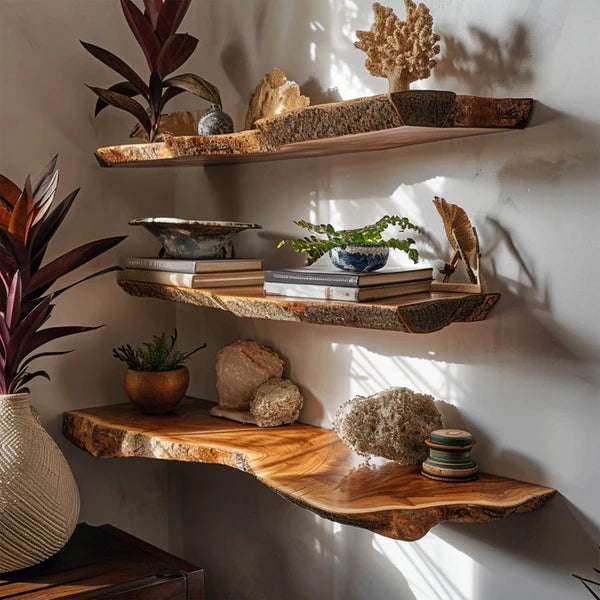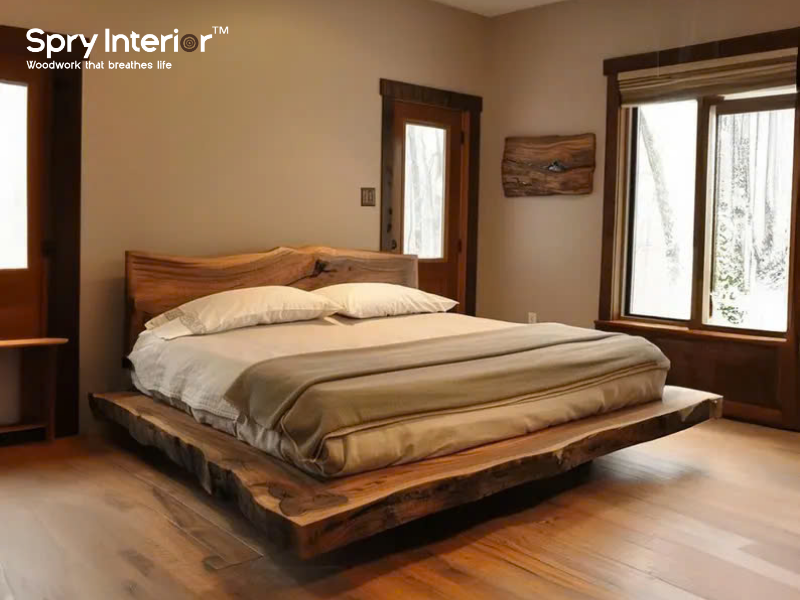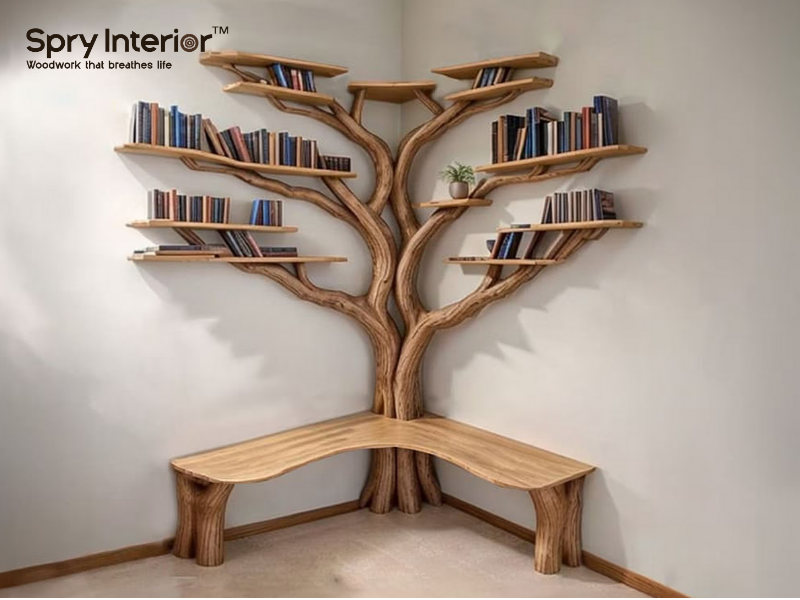What did a 1970s bedroom look like? If you’ve ever asked yourself this question, you’re not alone. The 1970s brought a unique and unforgettable aesthetic to interior design, one that continues to inspire homeowners, set designers, and vintage lovers even today. Known for its bold colors, eclectic patterns, and a heavy influence from counterculture movements, the 1970s bedroom was a blend of freedom, expression, and funk. Let’s step into this groovy past to explore what made the decade’s bedrooms so distinct and why its style still resonates decades later.
Wood Bookshelf Tree | Tree Bookcase Assembly Tutorial | 2025 Living Room Ideas
The Color Explosion: Shades of the Seventies
Earth Tones Reigned Supreme
A staple of 1970s bedroom design was the dominance of earth tones, warm browns, burnt oranges, mustard yellows, and avocado greens. These colors were everywhere, from wall paint to bed linens and even carpets. The palette reflected the era’s connection with nature and the growing environmental movement. Bedrooms felt grounded and cozy, wrapped in colors inspired by forests, deserts, and the earth itself.

Buy now: Tree Bookshelf Driftwood Branch Floating Bookshelf
Accent Walls and Psychedelic Patterns
One of the most iconic design choices of the 70s was the use of bold, patterned wallpaper on a single accent wall. Think swirling florals, geometric prints, and psychedelic motifs in contrasting colors. These walls added a sense of drama and personality to the room without overwhelming the space. It was common to find wallpapers that created an almost hypnotic effect, turning the bedroom into an artistic escape.
Vibrant Accessories and Decor
Color extended beyond the walls. Bedding, rugs, lampshades, and curtains all played into the decade's vibrant visual language. Bright oranges, pinks, and purples were often combined with earthy tones to create a dynamic yet harmonious contrast. Lava lamps, beaded curtains, and vinyl record players added flair, while shag rugs in unexpected hues became a bedroom essential.
Furniture with Personality and Function
Platform Beds and Waterbeds
When it came to sleeping arrangements, platform beds were the rage. These low-slung beds without headboards or footboards promoted a minimalistic yet modern look. On the more extravagant end, waterbeds also surged in popularity during the 70s. These beds were seen as luxurious, even futuristic, and were often framed in wood or faux leather to match the room’s aesthetic.

Statement Dressers and Vanities
The 1970s bedroom wasn’t complete without a large dresser or vanity. These furniture pieces were often made of dark wood, such as walnut or teak, with ornate handles and sometimes mirrored panels. Vanities, in particular, were styled with Hollywood lighting or boho flair, depending on whether the homeowner leaned more toward disco glam or hippie chic.
Bean Bags and Modular Seating
Casual seating also found its way into the bedroom. Bean bag chairs in shiny vinyl or soft corduroy were both decorative and functional. Modular seating, including low-slung chairs and sectioned floor cushions, allowed for easy rearrangement and emphasized comfort and personal style, essential for a decade that encouraged breaking the rules of traditional interior design.
Textures and Materials That Made a Statement
Shag Carpeting and Macramé Accents
One cannot talk about 1970s bedrooms without mentioning shag carpeting. Available in every imaginable color, this thick, luxurious floor covering added warmth and texture. Macramé, the art of knotting cord into decorative patterns, found its way into wall hangings, plant holders, and even room dividers, contributing to a tactile and handmade atmosphere.
Wood Paneling and Wicker Decor
Wood paneling on walls or furniture added depth and a rustic charm to 70s bedrooms. Whether real or faux, wood elements brought in that earthy feel the decade loved. Wicker also became a favorite material for headboards, nightstands, and baskets, offering a lightweight alternative with natural appeal.

Buy now: Tree Branch Wall Mounted Wild Mulberry Wood Custom For Cozy Living Room
Mirrors, Metallics, and Lucite
For those who leaned toward the disco aesthetic, metallic finishes and mirrors were key. Mirrored closet doors and metallic bed frames added a touch of glamour. Lucite, a clear plastic material, was also widely used for furniture and decor, giving bedrooms a sleek, space-age feel while reflecting light and color throughout the space.
Bringing the 70s Style to Modern Homes with SpryInterior
Blending Retro Charm with Contemporary Living
If you're wondering how to capture the vibe of a 1970s bedroom without creating a time capsule, SpryInterior offers solutions that blend retro charm with modern sensibility. Our curated furniture collections are inspired by vintage designs but made with today’s materials and craftsmanship. Whether it’s a teak nightstand or a shag-inspired rug, our pieces help you bring nostalgic flair into a fresh, livable space.

Custom Designs for Authentic Appeal
Unlike mass-produced replicas, SpryInterior specializes in handcrafted items that echo the spirit of the 70s. We offer customizable features that let you choose finishes, textures, and colors, helping you recreate the era authentically, whether you want to lean into the bohemian side or channel the disco glam. From hand-woven macramé accents to vintage-style platform beds, we bring the essence of the past to the present.
Sustainable Materials and Ethical Craftsmanship
Just as the 70s embraced a return to nature and conscious living, SpryInterior is committed to using sustainable materials and ethical practices. Our wooden furniture is sourced from responsibly managed forests, and our fabrics are selected for durability, comfort, and environmental impact. Choosing SpryInterior means embracing not just style, but also values aligned with both retro ideals and contemporary standards.
Looking Back to Look Forward
So, what did a 1970s bedroom look like? It was a visual expression of freedom, rebellion, and personal style, a space where colors clashed beautifully, textures invited touch, and every object had a story. From shag carpets to platform beds, from psychedelic prints to macramé masterpieces, the 70s bedroom was bold, comforting, and deeply individualistic.

Interestingly, today’s design trends are experiencing a renaissance of these very same elements. Many of the features that made 1970s bedrooms so iconic, earthy palettes, handcrafted decor, layered textures, are being reimagined for modern interiors. This resurgence mirrors the wave of interest in other nostalgic styles, including 90s bedroom ideas, which bring their own playful and tech-savvy vibe into the mix.
If you're intrigued by turning back the design clock, you may also find yourself wondering, How to make a 90s room? Or you might ask, What did a 90s room look like? These questions are just as relevant, as each era has its own story to tell through colors, textures, and design philosophies. Still, the 70s stand out for their unapologetic celebration of individuality, making them an enduring favorite for anyone looking to inject a bit of retro soul into their home.
Whether you're designing a fully vintage bedroom or just incorporating a few key elements, the 1970s offer a rich, vibrant palette to draw from. And with brands like SpryInterior's Furniture, bringing those dreams to life has never been easier or more stylish.








Leave a comment
This site is protected by hCaptcha and the hCaptcha Privacy Policy and Terms of Service apply.